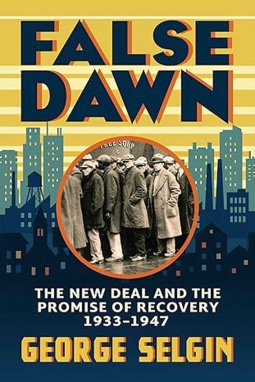The following passage is from FDR's Folly: How Roosevelt and His New Deal Prolonged the Great Depression (2003) by Jim Powell:
(2003) by Jim Powell:
"During the summer of 1937, businesses reported levels of unsold inventories - $5 billion worth, believed to be that highest level in American history. Industrial production fell one-third, and durable goods production was down about 50 percent. About 20 percent of workers lost their jobs, and some 10 million people were out of work. The unemployment rate approached 20 percent. The stock market declined, and on October 19, 1937 - which came to called 'Black Tuesday' - the Dow Jones Industrial Average plunged from 190 to 115. The decline continued into 1938, and by the end of the year stocks had declined about 50 percent from their level at year-end 1936"
- from Amazon:
